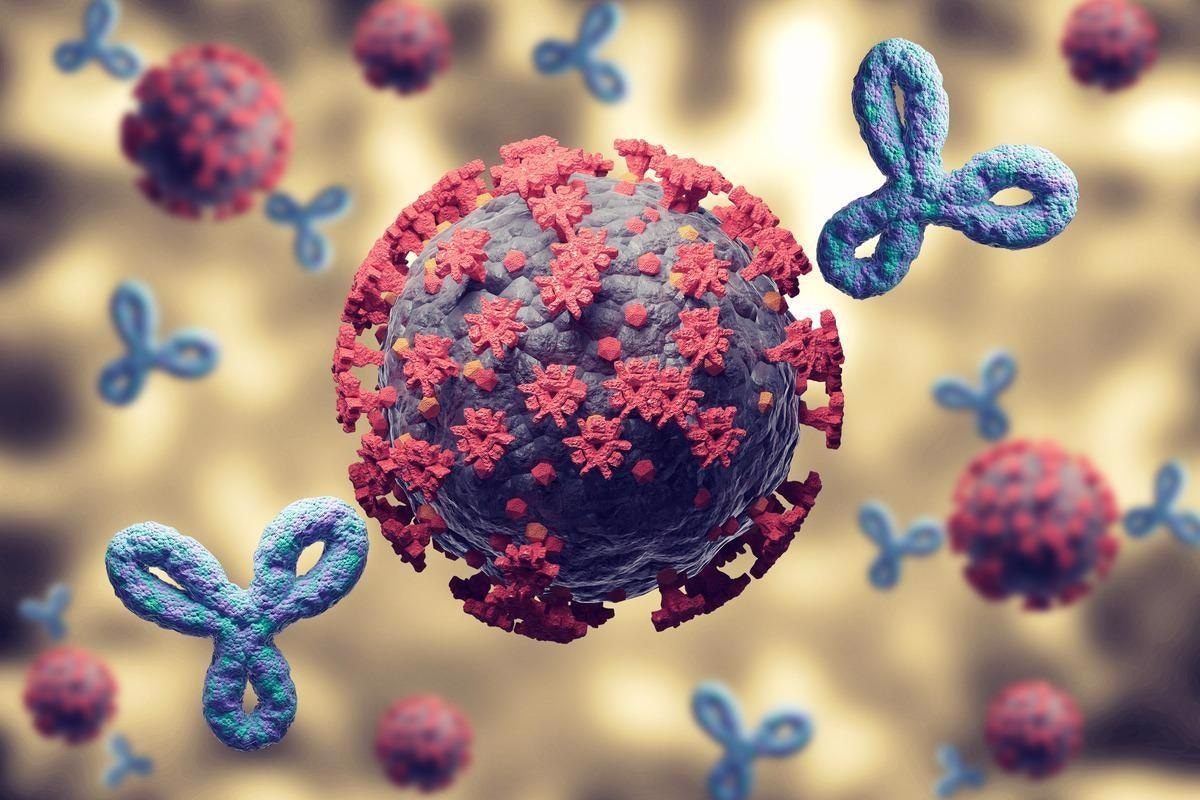In a recent study posted to the medRxiv* preprint server, an interdisciplinary team of researchers from the United States (US) analyzed a cohort of patients with human immunodeficiency virus (HIV) (PWH) recovering from coronavirus disease 2019 (COVID-19) and characterized severe acute respiratory syndrome coronavirus 2 (SARS-CoV-2)-specific immune responses in these patients.
To date, only limited studies are available on SARS-CoV-2 infection-induced immunological and clinical implications in PWH. There has been more recognition of post-acute sequelae of SARS-CoV-2 infection (PASC), also known as long-COVID, and its clinical burden of late.
Higher prevalence of factors like dysregulation of the adaptive and innate immune system, socio-demographic features, and medical comorbidities along with immune response differences to SARS-CoV-2 among PWH make them vulnerable to developing PASC.

Study: Post-acute sequelae and adaptive immune responses in people living with HIV recovering from SARS-COV-2 infection. Image Credit: Adao/Shutterstock
Study design
In this study, the team enrolled PWH who tested SARS-CoV-2-positive in a cohort of Long-term Impact of Infection with Novel Coronavirus (LIINC) at the University of California, San Francisco (UCSF) and compared with the HIV-negative group with an identical distribution of variables.
SARS-CoV-2-positive specific antibody responses were measured by the Pylon COVID-19 total antibody assay and a surrogate virus neutralization test (sVNT). T-cell responses were estimated by intracellular cytokine staining (ICS). The authors measured markers of inflammation such as monocyte chemoattractant protein 1 (MCP-1), interferon-gamma (IFNγ), interferon gamma-induced protein-10 (IP-10), and cytokine 3-PlexA [tumor necrosis factor (TNFα), interleukin (IL)-6, and IL-10] in blood plasma. The linear regression model was deployed to measure the differences in the level of virus-specific antibodies and responses of T-cells, as well as disparity in PASC prevalence by the HIV status.
Findings
This study showed that SARS-CoV-2-specific antibody responses were similar in people with and without HIV infection. By using SARS-CoV-2-specific antibody binding assay [1.31 fold higher; 95% confidence interval (CI)] and surrogate virus neutralization assay (1.01-fold higher; 95% CI), the researchers observed that the status of HIV infection was not a determiner of the humoral immune response. COVID-19 hospitalization in acute cases increased geometric mean titers (GMT) of binding antibodies (4.29- fold higher; 95% CI) and surrogate viral neutralization testing (2.57- fold higher; 95% CI).
The researchers observed that status of HIV was not associated with the magnitude of SARS-CoV-2-specific memory cluster of differentiation 4 (CD4) + T cell responses (1.13-fold higher) produced by INFγ. However, in PWH, SARS-CoV-2-specific memory CD4+ T cell responses were relatively lower (70%; 0.30-fold). In PWH, increased expressions of programmed cell death 1 (PD-1) on SARS-CoV-2-specific memory CD4+ T cells were observed (1.53-fold higher) while there were no significant differences on SARS-CoV-2-specific memory CD8+ T cells for PD-1 expression (1.21 fold higher).
The team examined the association of CD4/CD8 ratio with adaptive immune responses after SARS-CoV-2 infection in PWH. The team noted that CD4/CD8 ratio was not predictive of levels of binding antibodies or surrogate virus neutralization. Higher CD4/CD8 ratios were associated with decrease in SARS-CoV-2-specific CD4+ T cells frequency (67% lower; 0.33 fold), PD-1 expression on SARS-CoV-2 (36% lower; 0.64-fold), and the expression of PD-1 on SARS-CoV-2-specific CD8+ T cells (66% lower; 0.34-fold). In HIV-negative individuals, similar findings were noted with a non-significant trend (0.70 fold; 95% CI).
In line with the previous studies conducted by authors, in this study, authors observed an effective correlation between the binding antibodies levels (r-0.33; p-0.008) and virus neutralization response (r-0.33; p-0.007) and also between binding and surrogate neutralization responses and CD4+ T cells of SARS-CoV-2 (r-0.41, p<0.001 and r-0.42, p<0.001, respectively).
The team observed higher levels of plasma inflammatory markers like IL-6 (1.55-fold higher), IP-10 (1.31-fold higher), and TNFα (1.26-fold higher) in the PWH compared to the HIV-negative group.
In a model controlling for infection time, age, and hospitalization, PWH showed higher odds of PASC reporting (4.0 fold higher; 95% CI). The relationship was maintained when PASC was defined as three or more symptoms compared to less than three symptoms. There was a 1.91-fold higher number of PASC symptoms in PWH rather than those without HIV.
The researchers observed that antibody levels and T- cell responses within the cohort did not correlate with PASC. However, in models controlling HIV status, increased PD-1 expression on CD4+ T cells but not on CD8+ cells was an independent predictor of PASC. A decrease in PD-1 expression by 10% resulted in 2.02 folds-higher odds of PASC [adjusted odds ratio (AOR); 2.02].
Finally, the results showed that after adjusting for HIV status, the odds of PASC increased with each 10% increase of IP-10 (1.18-fold), IL-6 (1.10 fold), and with higher TNF α levels, while no association was found with other plasma inflammation markers and PASC like IL-10, IFγ, and MCP-1. In PWH, the odds of PASC increased with higher IP-10 levels (AOR; 1.06) and higher TNFα levels (AOR; 1.20) but not with IL-6.
Conclusion
To summarize, this study has identified a significant disparity in SARS-CoV-2 CD4+ and CD8+ T cells that may play an important role in long-term immunity induced by natural infection.
Of note, the study provided evidence that the presence of PASC was strongly predicted by HIV status and was specifically common in PWH. The authors warrant the need for extensive and detailed studies of PASC to develop targeted interventions to prevent this new condition in the PWH population.
*Important Notice
medRxiv publishes preliminary scientific reports that are not peer-reviewed and, therefore, should not be regarded as conclusive, guide clinical practice/health-related behavior, or treated as established information.
Journal reference:
- Post-acute sequelae and adaptive immune responses in people living with HIV recovering from SARS-COV-2 infection, Michael J Peluso, Matthew A Spinelli, Tyler-Marie Deveau, Carrie A Forman, Sadie E Munter, Sujata Mathur, Alex F Tang, Scott Lu, Sarah A Goldberg, Mireya I Arreguin, Rebecca Hoh, Jessica Y Chen, Enrique O. Martinez, Ahmed Chenna, John W Winslow, Christos J Petropoulos, Alessandro Sette, Daniella Weiskopf, Nitasha Kumar, Kara L Lynch, Peter W Hunt, Matthew S Durstenfeld, Priscilla Y Hsue, J Daniel Kelly, Jeffrey N Martin, David V Glidden, Monica Gandhi, Steven G Deeks, Rachel L Rutishauser, Timothy J Henrich. medRxiv 2022.02.10.22270471, doi: https://doi.org/10.1101/2022.02.10.22270471, https://www.medrxiv.org/content/10.1101/2022.02.10.22270471v1






























